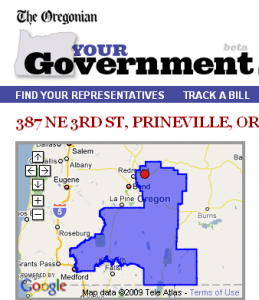 If your goal is to make the online news experience more interactive, you’ve come to the right place. New tools that can help you do that were on display yesterday at a Washington conference honoring this year’s winners of the Knight-Batten awards, and here’s the best part: They’re all free.
If your goal is to make the online news experience more interactive, you’ve come to the right place. New tools that can help you do that were on display yesterday at a Washington conference honoring this year’s winners of the Knight-Batten awards, and here’s the best part: They’re all free.
Take Apture, a project launched by three Stanford University grads, that adds links to interactive videos, images, Wikipedia, maps and more that users can explore without leaving the original page. “Readers leave sites to find more information,” says CEO Tristan Harris. “When they leave, they generate revenue back to Google not you.” Apture aims to turn that around. It’s already being used by major newspapers, including the Washington Post, but Harris says he’s not aware of any television stations that have installed it on their sites. Yet.
ChangeTracker, from the folks at ProPublica, monitors the White House Web site for updates and alterations, often uncovering news in the process. The Web based tool comes with instructions on how to build your own tracker. Can you think of a local government site that would be worth keeping tabs on?
Coming soon from the New York Times developer network: document reader, a cool app that makes it easy for users to view and search original documents and for journalists to add “annotations” to explain the significance of specific passages. Aron Pilhofer, editor of newsroom interactive technologies, says the next step will be to allow users to annotate documents, too. “We’re shooting for something that enhances the story we’re trying to tell,” he says.
 Already available from the Times: a Congress API that collects summaries of roll-call votes in the U.S. Congress, lists of members, vote data, floor appearances, bill information and more. Anyone can use it, as The Oregonian did to build Your Government, a site that lets users easily track what their representatives are up to.
Already available from the Times: a Congress API that collects summaries of roll-call votes in the U.S. Congress, lists of members, vote data, floor appearances, bill information and more. Anyone can use it, as The Oregonian did to build Your Government, a site that lets users easily track what their representatives are up to.
The Times has a similar site called Represent, now in beta form, that also includes data on city government officials, plus quick links to stories that mention them.
Finally, this retro idea may be worth a look: Printcasting allows anyone to publish a local magazine–on paper–in a snap. Developer Dan Pacheco calls it a way to make digital content available to people who either can’t get online or who really want a print publication. The site also makes it easy for advertisers to target specific audiences, and publishers get most of the revenue. Media News Group, which owns the Denver Post and other newspapers, is experimenting with printcasting to test niche publications.








